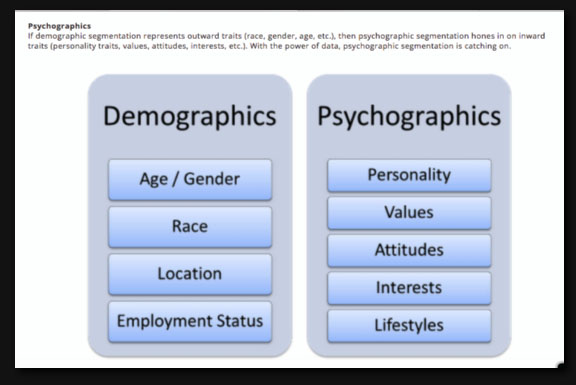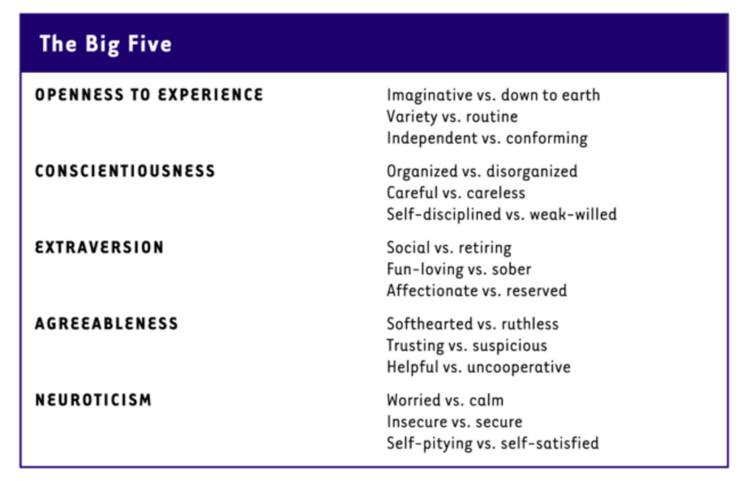The Changing Landscape of Politics in Canada
The Changing Landscape of Politics in Canada:
August 24, 2018: With the bombshell just dropped by Maxime Bernier, this post, which I began researching and writing a couple of months back, has taken on new significance. There seems little doubt that at least some of the unseemly tactics that plagued the recent Ontario election will also mark the next federal election. The question asked, and which I try to answer is, “to what extent will the effective use of social media define the winners and losers?”
And, this post will also outline why I think, in a four-party system, it is possible that 65% of Canadians who split the vote between three parties, could hand a majority to 35% who didn’t vote for one of those three. It is also a process by which a man such as Doug Ford could, in the federal election following the next, become the Prime Minister of Canada. (2008 Federal election split) (2011 Federal election split)
1. Party Platforms, where did they go?
In the past, party platforms were meant to draw voters to a particular set of principles developed by a party over months and years (1). They were the centrepiece of every election campaign and, there was plenty of room for debate at all candidate meetings from the party leaders to grassroots. However, in this new age, winning or losing seems to be based more on who best controls the message and who owns the most effective means of smearing an opponent or idea (2). If you followed the leadup to the Brexit vote or the last US election, the winning sides resorted almost exclusively to messages of fear and hate, mixed with a good measure of fake news.
The majority in Britain did not expect the Brexit vote to pass any more than Americans thought Donald Trump would become President. We now know, and those outcomes were not based on facts supporting the British exit from the EU or, in the United States, what the Republicans intended to accomplish beyond Making America Great Again, by building a wall on the southern border and by draining the swamp in Washington. Along the way, the candidates resorted to smearing campaigns so vile the public lost all trust in the electoral system. Could the same happen in Canada? The results of the Ontario election suggest we have already arrived.
Surprisingly, a considerable portion of the voter manipulation that took place in England during the Brexit run and in the United States over the last election cycles was not centred in Russia but, right here in the Capital of British Columbia, in the offices of AggregateIQ, situated at 501 Pandora Avenue, Victoria.
2. Electoral Meddling
The young man central to a worldwide investigation into electoral meddling, Christopher Wylie, was raised in Victoria, B.C., and, according to background material, suffered many 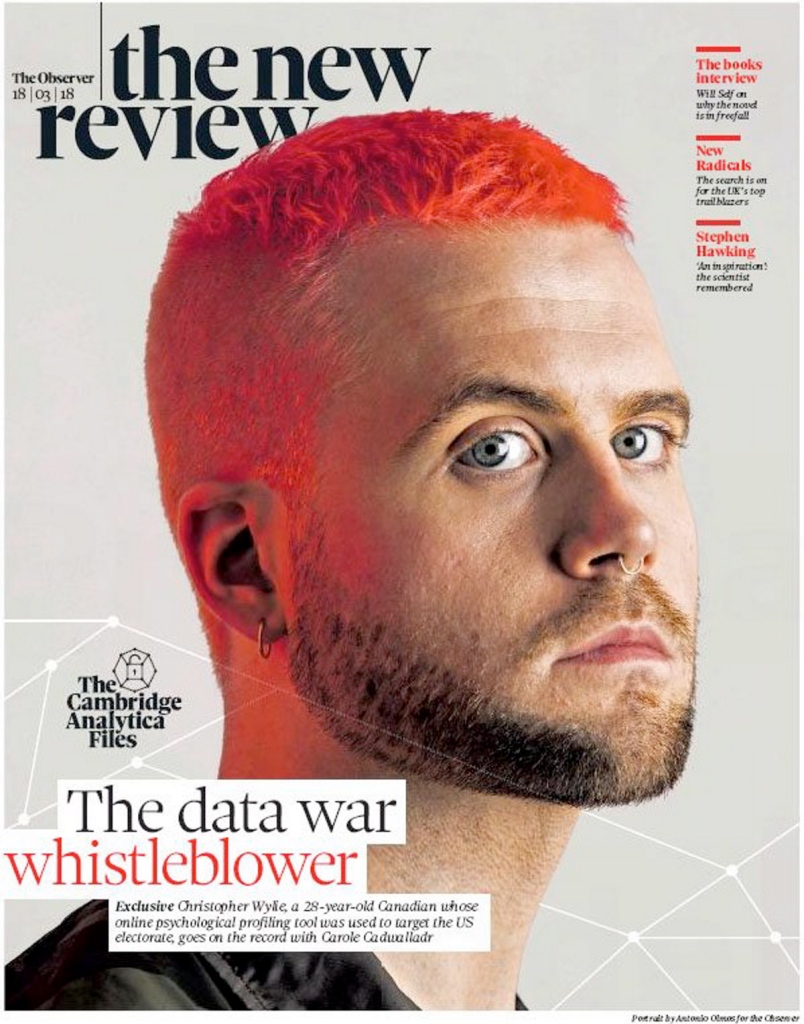 setbacks in early life. It’s equally clear; he became exceptionally gifted in the present-day techniques of data mining and social media manipulation. There is nothing in his history suggesting Wylie was doing anything illegal, however, from an ethical point of view, he and those with whom he worked, crossed a line about which we know very little.
setbacks in early life. It’s equally clear; he became exceptionally gifted in the present-day techniques of data mining and social media manipulation. There is nothing in his history suggesting Wylie was doing anything illegal, however, from an ethical point of view, he and those with whom he worked, crossed a line about which we know very little.
During an earlier Canadian Federal election, a party insider stated Wylie “…lost his job in the office of former Liberal leader Michael Ignatieff in large part because he was pushing a nascent form of a controversial data-harvesting technique,” (Data Mining in Canada)
Those who closely followed that election will remember Ignatieff refused to engage in fear-mongering and smear tactics even though his election team warned him he would lose unless he responded in kind. He lost. Social media, email, robocalls and other outlets for negative messaging had proven their worth. While data mining played a significant role, the unrestricted use of social media to spread fear and hate has become a standard that is now undermining the very foundations of our democracy. How does it work?
3. Cambridge Analytica and AggregateIQ
It now seems fairly certain the parent company of AggregateIQ, a company called Cambridge Analytica, gained access to the personal data of millions of FB users, likely through Russian or other hackers. That data was used to skillfully nudge British voters towards leaving the European Union and US Electoral College towards supporting Donald Trump (Trump had lost the popular vote). While hacking was likely in those instances, the entire system has now moved to new levels where hacking is not as important. In this regard, marketing specialists have led the way.
The algorithms used to identify individuals interested in a particular product can be just as effectively used to determine who will support a political party, candidate or cause. Or, more importantly, those with personality traits who can be nudged towards a particular party or cause. While this form of manipulation is nothing new (TV and Print Media carried the banners in earlier years), the fact this form of reach is now so specific and so easy to implement, millions upon millions of individuals can be targetted with relative ease. In most cases, those targetted do not even realize they are being targetted. That’s where personality profiling comes into play.
4. An OCEAN of information from data mining
Profilers using Demographic and Psychographic data (Chart 1), along with the Big Five personality traits defined by the acronym O.C.E.A.N., (Chart 2) understood that once sufficient data was collected on an individual, it was relatively easy to draw that individual to a particular product or ideology.
Chart 1: Profilers first hone in on the outward traits (Demographics), then the inward traits (Psychographic). This is then followed by collecting OCEAN based information (Chart 2)
Chart 2: The Big Five
It was a Cambridge University study that used these characteristics, to assess the ‘likes’ of 86,000 individuals as a means to develop profiles on each. Following the study, it did not take long to create algorithms to analyze Facebook ‘likes’ as a means to predict the likelihood of a person purchasing a certain product or supporting a specific political party, candidate or idea. When an individual hits “like”, that “like” is recorded and the algorithm begins to take shape. A whole series of algorithms have now been developed based on our “likes.” Here is the result.
If an individual input just 10 likes, the emerging algorithm was more accurate than a work colleague. Clicking 70 likes, allows an interested party to obtain a better understanding of the person’s character than a close friend or room-mate. 150 ‘likes’ will outperform a parent or sibling, and 300 ‘likes’ allows the program to judge the persons character better than a spouse. With just a few dozen more “likes”, the algorithm is better able to predict an individuals behaviour than the individual themselves. For background on the Cambridge University study and links to Cambridge Analytica (Link Here) (Another article)
Now, let’s turn to a recent event in which the Cambridge system was put to use in a Canadian election.
5. Doug Ford becomes Premier
All you need do is look at the time frame of Ford’s ascension to power to be drawn toward a suspicion 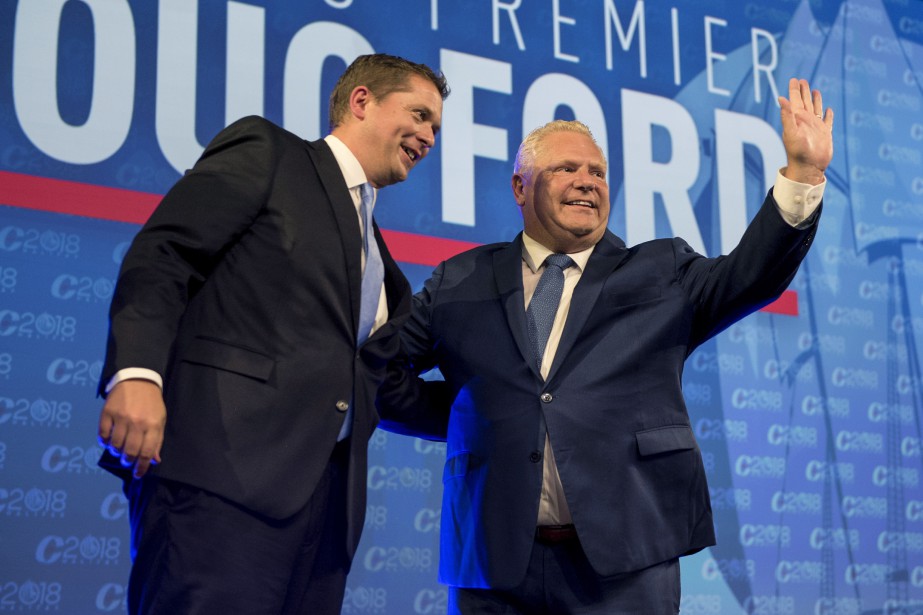 that something other than chance circumstance was at play. How did a man with no experience in Provincial or Federal politics, operating without a platform and without entering into any substantial interaction with the mainstream media or the public, knock off the leader of the Provincial Conservatives, sideline other erstwhile candidates for his party, then, as a final step, secure the premiership with a massive majority?
that something other than chance circumstance was at play. How did a man with no experience in Provincial or Federal politics, operating without a platform and without entering into any substantial interaction with the mainstream media or the public, knock off the leader of the Provincial Conservatives, sideline other erstwhile candidates for his party, then, as a final step, secure the premiership with a massive majority?
We do know that on his way to the win, Ford scripted his own news stories as if they were coming through regular news sources as well as orchestrating an overwhelming social media presence. In his quest, we know the federal and provincial Conservatives, along with private individuals and groups, staged a merciless online campaign against the Liberals, NDP and Greens. In the process, fact and fiction became merged into memes, tweets, videos, emails, phone calls, and handouts. In the five months, between January 24, 2018, and June 7, 2018, the Conservatives dumped one leader, selected another under suspicious circumstances, ran a campaign and won the election, and it all began with one carefully orchestrated Smear Campaign.
6. The Smear
Most will be familiar with the process of Smear Campaigns (examples), as they have been part of our world since the beginning. What has happened in recent times is the process is far more simple in the age of social media.
All that is needed is a tidbit of legitimate, or even false, information that has the appearance of legitimacy, which casts a person into disrepute. If you can quickly draw in both mainstream and social media, you then have the makings of a full-fledged smear campaign, a process that buried Patrick Brown over the course of a few hours earlier this year. Here is the timeline.
Day 1, Wednesday, January 24: Patrick Brown calls a last-minute news conference to deny a pending news report about sexual misconduct, and decry them as “categorically untrue.” Minutes later, CTV News airs a story in which two unnamed women accuse Brown of improprieties some ten years earlier. Few details are released.
Day 2 Thursday, January 25: Brown issues a statement in the early morning hours saying he will step down as party leader to focus on clearing his name. No one yet knows what took place behind the scenes over that 24 hour period but, one can surmise, it was not pretty.
Day 2 (a few hours later). The PC caucus names Tory legislator Victor Fedeli as interim leader. Due to many election irregularities that had been dogging the party, Fedeli vowed to root out the “rot from within.” There was never full disclosure on these matters but, we do know it involved nomination and voting irregularities in many ridings. The caucus further recommended Fedeli lead the party to the looming election.
Day 3 Thursday, January 26: (again, just a few hours later). The party executive dismissed the caucus direction announcing instead of Fedeli leading the party into the election, a leadership contest would take place.
Day 6 Sunday, January 29: Three days after the leadership announcement, former Toronto city councilor Doug Ford, becomes the first person to declare his candidacy for the leadership. Ford promised to wrest control of the party from elites and give a voice to the grassroots members. Who the elites might be was never discussed. There is now little doubt his run to ‘wrest’ control of the party began well before the departure of Patrick Brown.
Following Ford’s announcement and over the next week, three more persons, Christine Elliott, Caroline Mulroney, and Tanya Granic filed their papers.
Day 14 Tuesday, February 6: Brown sent out a tweet reaffirming his denial of all sexual misconduct allegations and saying “the truth will come out.”
Day 17 Thursday, February 9: Post Media published the first interview with Brown since his resignation, in which he Brown stated he was contemplating legal action for what he called the “absolute lies” being spread.
Shortly after, Brown published the first of several Facebook posts in which he vowed to clear his name and in which he questioned the credibility of the two women who brought allegations against him. He also openly challenged the veracity of CTV’s reporting on the original story and pointed out discrepancies in the women’s accounts that he says prove their accusations were false.
Day 21. Monday, February. 13: CTV reports one of Brown’s accusers had altered the timeline of her story but stood by the core events of her allegation. The woman also began to walk back her story in which she initially claimed she was still in high school at the time of the incident as she was of legal age. At that point, Brown announced his intention to sue CTV for its reporting of the allegations against him.
Day 24. Thursday, February 16: Interim leader Vic Fedeli announced Brown was officially kicked out of the caucus. With less than an hour to go before the deadline for candidates to register for the leadership expired, Brown joined the race. He said his name was cleared and he wanted to focus on getting Ontario back on track.
Patrick Brown, Fabricated Political Assassination
Take a few moments to digest the timeline and consider just how much was packed into that 24-day period and whether you think it all just flowed out without there having been some collusion between key players.
Now, let’s follow Ford’s rise to power and the role of FPTP (First Past the Post) played in the process.
7. First Past the Post (FPTP)
In general, across Canada and in the Provinces, it takes something in the of 40% of the voting population to scratch out a majority government. Sometimes it’s razor-thin, as it was in the last BC election, or, in the recent Ontario election, 40% led to a massive majority. The effective targetting of potential supporters through social media accounts held the keys to success in Ontario.
Many agree standard TV and print media are now taking a back seat when it comes to playing the election game. First, TV and print are expensive, and with a change in election laws (Caps on Spending) in Ontario regarding third-party spending, social media and fake news outlets have become the cheapest and most effective means of gaining access to voters.
It is also generally accepted that 60 – 70% of the population go to social media as their primary source of news (Pew Research). It is here the majority of voters gain access to editorials and posts that cater to their specific interests. Why would any party spend massive amounts of money on TV and print when they can get their message out on social media for cents on the dollar and, with reposts, often for free?
An added advantage of social media, is there are few ethical and moral considerations regarding what individuals and groups choose to post. People can say pretty much whatever they want without fear of being sued as they can share a hateful or derogatory view prepared by someone else. Corner your social media demographics with low voter turnout (say 60%) within a multiparty system, and you have the winning ingredients at your fingertips.
As 40% is the magic number that can lead to a majority, all any of the leading parties need do is set aside any moral or ethical considerations, then move as little as 12% of the electorate in your direction. That’s where profiling becomes critical. You need to find your potential supporters, then move them to action, and by action, I mean getting them to the polling booth. That’s where the “like” profiling provides the leads.
In the recent Ontario election, voter turnout hovered around 57.7% or a little over 5.7 million of the 10.2 million eligible voters. The election results gave the Conservatives 41%, NDP 34%, Liberals 20%, Greens 4.5%, and Others .5%. That translated to:
2.33 million votes for the Conservatives
1.94 million votes for the NDP
1.14 million votes for the Liberals
0.26 million votes for Greens
0.03 million votes for Other
Even though six out of ten voted against Ford and the Conservatives, they won a massive majority of 76 seats in the 124 seat legislature. Given all the controversy surrounding the Conservatives, how did they manage to gain that majority? Within their numbers, it seems reasonable to assume at least 50% of the 2.33 million were hardcore supporters who would pull out all stops to move the party into power. They didn’t care who the leader was. But, what about the other half? That’s where social media and algorithms came into play.
Spreading the word involved mass-producing meme’s and videos, thousands of which targetted other party leaders, minorities and programs in the most unseemly ways. Through FB alone, hundreds of thousands of account holders had already willingly provided “likes” that allowed them to be targetted based on the specifics of their hopes, interests, fears, desires, and dozen of other parameters. Among the selected parameters the conservatives, provincially and federally, have become masters at applying the politics of division.
8. Creating divisions
Fear of crime and criminals, immigrants, disdain for welfare recipients, LBTGQ, women’s rights, government, socialists, liberals, environmentalists, and the religious beliefs of some, are just a few of the areas in which targetting is effective in motivating potential supporters to take action. How was it done in Ontario and how is it being done across Canada? Take a few minutes, hop onto FB to check out Ontario Proud and Ontario Canada Campaign, as just two of dozens of sites run by people with close connections to the Conservative Party, and there you will see memes and videos where attacking individuals and groups is done with the sole purpose of creating enmity in our society.
Ontario Proud, as well as other Proud sites across Canada, were founded by former federal Conservative staffer Jeff Ballingall at the height of the furor over Ontario’s hydro rates in February 2016. An article in the Globe and Mail stated,
“… when it comes to how we get information in the digital age – the tone and tribalism of political discourse, who influences it and how, what it is likely to look like in this year’s Ontario election as well as campaigns nationwide – Mr. Ballingall’s claims can’t be dismissed out of hand. Working virtually alone, he is managing to simultaneously make a mockery of his province’s new electoral finance laws, and to demonstrate that there is a huge market here for the sort of bias-reinforcing social media content that has polarized electorates around the Western world.”
The Finance Law Ballingall refers to was put in place only months before the Ontario election and was intended to limit the power of unions and big business carrying out massive campaigns targetting one side or the other. For third party groups, the limit was $600,000 leading up to the election and $100,000 from the day the writ was dropped to election day. No one promoting a parties interest on social media would come even close to spending those kinds of dollars.
Larry Brandt, another Conservative with long and close ties to the party, opened his first Canada Campaign FB Page in Manitoba and has since expanded across Canada. On his Twitter Site, he claims the following connections, “former MB organizer for Andrew Scheer’s leadership race. Board Exec for MP James Bezan’s Selkirk-Interlake-Eastman EDA, and former prez for MLA Derek Johnson.” Both Proud and the Canada Campaign share similar memes and videos.
Both the Proud and Canada Campaign along with dozens of other similar sites act “as official third-party advertisers in provincial and federal elections,” and those sites, “know how to weaponize social media platforms in the same manner which proved effective for the successful populist movements of Brexit and the last US election.
In early 2018, the Proud Facebook page boasted 289,000 likes and by the time of the election in June, boasted 395,000. If the vast majority of those who like the page were Ontarians, as Jeff Ballingall asserted, by the time of the election he was reaching 1 in 34 Ontarians.
That’s more likes than the respective pages of Premier Wynne, the Ontario Liberal Party, Progressive Conservative Leader Patrick Brown, the Ontario PC Party, NDP leader Andrea Horwath, and the Ontario NDP — combined. The Ontario Proud page also “gets more Facebook engagement than the Toronto Star and Globe and Mail pages together, something Ballingall is fond of gloating about.”
The following statistics were published by the Proud after the election and the accomplishments, if correct, were significant.
63,644,903 Facebook impressions
2,197,421 Twitter impressions
Over 9,400,000 video views on Facebook
Over 2,500,000 phone calls made
Over 1,000,000 text messages sent
15,000 brochures distributed at transit stations
Take a few minutes to scan the Blog, Facebook Page, Twitter accounts of Ontario Proud and their ideological partners. Link here for an outline of what one lone wolf can accomplish.
9. What will the future hold?
The great advantage for a political party having much of their social media presence held at arm’s length is the ability to promote divisions while at the same time denying support for material that is hateful, derogatory and degrading to individuals and groups.
Take, for example, the ongoing dispute the Conservatives have with Maxine Bernier and his Tweets and other positions he holds. The heir apparent was defeated by Andrew Sheer by the narrowest of margins, margins that Bernier claims were ‘fake votes.’ Given the revelations about the subterfuge in many Ontario Conservative ridings and then the rise of Doug Ford to the leadership, just adds fuel to the fires of suspicion. The fact that many former staffers with the Conservative Party have become leaders in the field promoting all kinds of divisions within Canada, adds more fire.
Each day these party insiders at the provincial and federal level add hundreds of meme’s, tweets and videos pushing hate, fear, fake news, and disparaging comments about other parties and party leaders, but when another would-be national leader of their party posts something even mildly racist, hateful or disparaging of immigrants, the party and leader become apoplectic. You can’t have it both ways, or can you?
The same thing is done when another party does something which they suggest “shuts down public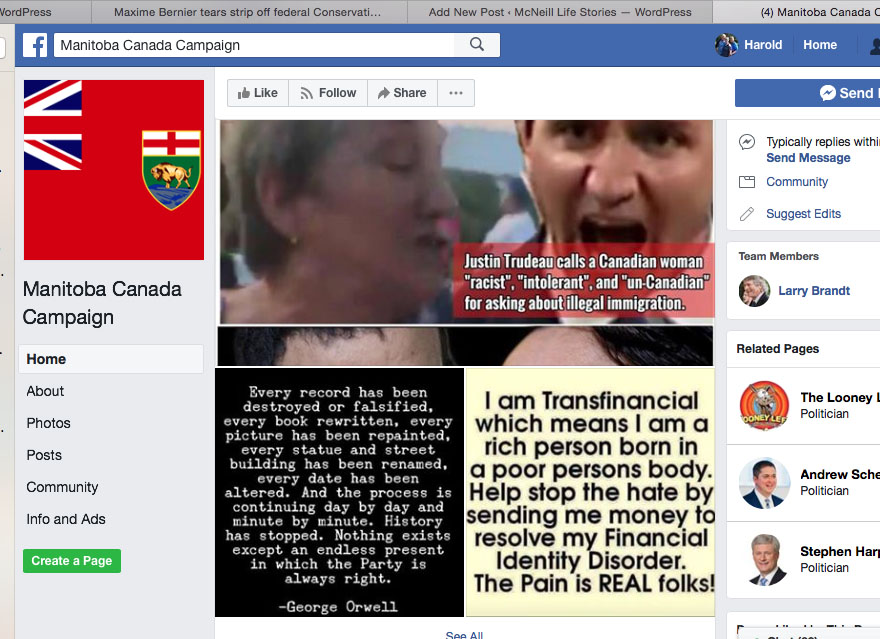 comment” as in Quebec when Trudeau took a woman to task for her racist comments about immigrants.
comment” as in Quebec when Trudeau took a woman to task for her racist comments about immigrants.
Only after Andrew Sheer and the party discovered the women were in fact deeply racist and belonged to a number of far-right hate groups, did they begin to walk back their comments? However, if you check the Conservative social media pages, blogs, and talk shows, that message is still be spread far and wide.
Screenshot: This is the lead post today, August 24, 2018, on the Manitoba Canada Campaign FB page. As noted earlier in this post, the site is managed by Larry Brandt, Andrew Sheer’s Manitoba Leadership Campaign Manager.
In this new age of social media political skullduggery, it is clear it will be difficult for any party not willing to use similar techniques, to gain and hold the upper hand. While I realize other parties are not above using dirty tricks, it is my sense they, along with the NDP and Greens, would find it extremely difficult to begin an online campaign such as that run by the Conservatives and their arms-length staffers.
Not only is social media less expensive, but there are also few limits as to what one can say or do, whereas, with Radio, T.V. and traditional print media, as used by many parties, there are codes of ethics and standards that must be met. Another advantage of social media is that political parties need only dedicate a few party workers to the process, with that help from the party, let the arms-length supporters take up the cause. How the NPD, Greens, and Liberals will fair in this no holds barred world remains to be seen.
August 23, 2018. While writing the final section of this article, the news flash came up stating Maxime Bernier had resigned from the Conservative Party in favour of starting his own party. This will certainly provide some challenges for Andrew Sheer and his party as, I think, Bernier has a great deal of support within the part and many think he was cheated out of the leadership role.
NEXT UP: While researching this post I came up with a number of other contradictions that piqued my interest. With just a bit more research the following article is now taking the form:
What happens when Provinces fail to plan for the future. It happens to the rich and poor.
Our squandered pride and prosperity:
Harold McNeill
Footnotes
(1) Party Platforms: In Canada, the Blue Book (Conservatives), Red Book (Liberals), Orange Book (NDP), and, more recently, the Green Book, defined the policy goals of each. But, are these tried and true methods applicable today? While parties still need to develop a set of principles they promise to follow if elected, what Brexit and the last US election taught the world is that developing a comprehensive set of policies is quickly becoming a thing of the past.
(2) As Canadians, we generally feel insulated from challenges facing other nations, and while our isolation somewhat protects us, recent events demonstrate that when our nearest neighbour turns against us on several fronts, things quickly become more difficult.
While our crime rate remains low, income generally high, a health care system that sits near the top, and a social security system that strives to serve all citizens, rich and poor alike, there is a minority in our country who seek to build walls rather than build bridges. Even in the face of that, we remain a cohesive, multicultural nation that, at most levels of discourse, promotes harmony and respect as opposed to fear and hate. Gifted with a massive country that holds a natural resource base greater than every other nation on earth, provides an overwhelming advantage.
However, it is becoming increasingly clear many Canadians are not aware of how vulnerable we are to the divisions infecting other parts of the world, most notably our nearest neighbour, the United States. Daily we see political, race, and religious wedges were driven into the heart of that country, and while we have some worries about our political systems being compromised, many think we sit in a position of relative safety.
Samples of Conservative Party Managed FB Pages and Web Sites There are dozens more, as they seem to come and go and many are interconnected as many use the same content.
The King of Canadian Shitposting: A good summary of the type of attack now being mounted through social media.
United Conservatives Movement of Canada FB Page: Anti-Liberal, Pro-Conservative, no names provided of Movement Managers. (Broken Link)
Jeff Ballingal: Background on his Proud movement (more background)
Alberta Proud: Jeff Ballingall
British Columbia Proud: Jeff Ballingall
Take Back Your Power Canada: Jeff Ballingall
Saskatchewan Proud: Jeff Ballingall
Quebec Proud: Jeff Ballingall. The link is now broken????
Ontario Proud Blog Jeff Ballingall
Manitoba Canada Campaign: Larry Brandt, another Conservative with long and close ties to the party, opened his first Canada Campaign FB Page in Manitoba and has since expanded across Canada.
On his Twitter Site, he claims the following connections, “former MB organizer for Andrew Scheer’s leadership race. Board Exec for MP James Bezan’s Selkirk-Interlake-Eastman EDA, and former prez for MLA Derek Johnson.” Both Proud and the Canada Campaign share similar memes and videos.
Other sites by Larry Brandt:
The Cultural Action Party is an anti-multicultural political party registered in the province of British Columbia, Canada, and previously registered in Ontario. Founded by social conservative activist Brad Salzberg
Canadian Conservatives: Larry Brandt
Canada Free Press Brad Salzberg
Immigration Watch Canada No name but have Contact Us email address
Saskatchewan Canada Campaign: Larry Brandt
Alberta Canada Campaign: Larry Brandt
Quebec Canada Campaign: Larry Brandt
Ontario Canada Campaign: Larry Brandt
Take Back Your Power Canada: Jeff Ballingall
Miscellaneous Sites
Canadian Political Memes No contact or administrator detail
United Conservative Movement of Canada No contact or administrator detail (Link now broken)
Canadians for Liberty FB Page: Managed by Matt Southy, supports Maxime Bernier vision
Aaron Gunn FB Page: BC Based political commentator and closely connected to the Proud and Canada Campaign sites.
Aaron Gunn Linked In: Represent the BC Proud organization in public forums and respond to media requests ….. Produce video content for BC Proud’s social media channels (over 10 million views)
Aaron Gunn.ca: More of same.
Westwatch Canada Watching out for Western Canada
True North News Online Newspaper formate
The Post Millennial Wide range of coverage in news form.
(676)
Trackback from your site.


